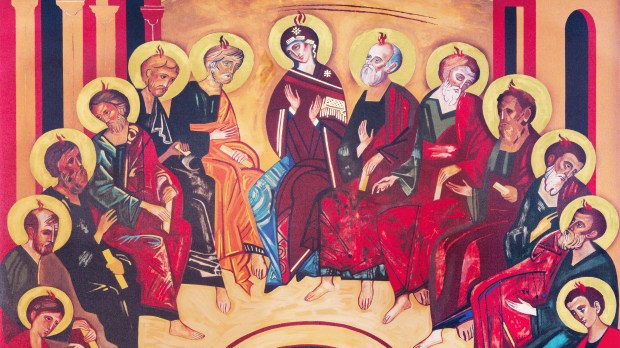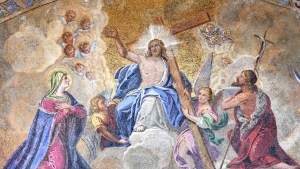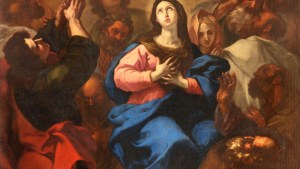Among the many representations of the events of Pentecost is the icon written by Eastern Christians. This icon has ancient roots and features a large array of symbols.
Rays of fire
At the top of the icon is typically a semicircle with 12 rays of light or fire, symbolizing the descent of the Holy Spirit upon the 12 apostles.
Apostles seated with Mary
Mary is often in the center of the icon, with the apostles seated in a semicircle. They are seated in such a way that expresses the harmony and unity the Holy Spirit brings to the Church.
Mary is also seated on the “teacher’s seat,” reminding us that she is the example for all Christians to follow.
In other depictions there is an empty spot, reserved for Jesus Christ, the head of the Church.
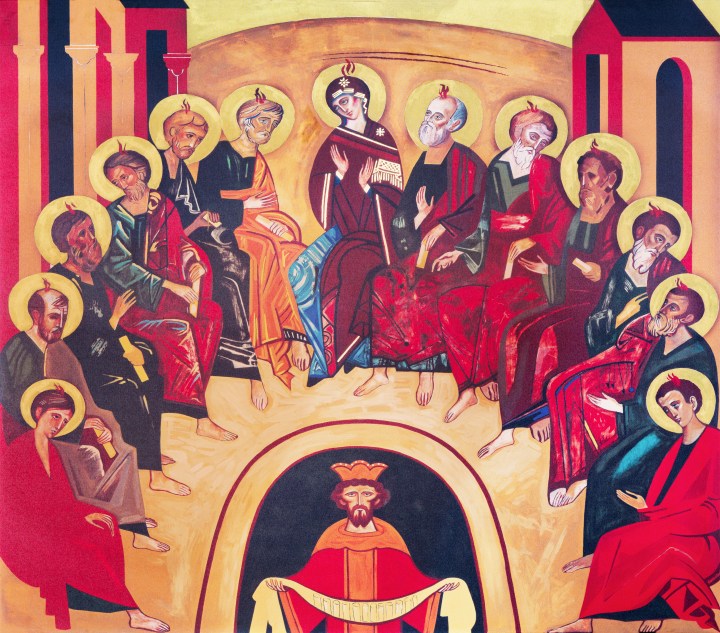
Cosmos at the bottom
One of the most fascinating parts of the Pentecost icon is the strange figure at the bottom of the icon. It is said to be the personification of the world, “Cosmos,” and represents the salvation of the whole world.
A 17th-century description, quoted on the blog Orthodox Road, explains this symbolism.
The man sits in a dark place, since the whole world had formerly been without faith; he is bowed down with years, for he he was made old by the sin of Adam; his red garment signifies the devil’s blood sacrifices; the royal crown signifies sin, which ruled the world [as a tyrant]; the white cloth in his hands with the twelve scrolls means the twelve Apostles, who brought light to the whole world with their teaching.
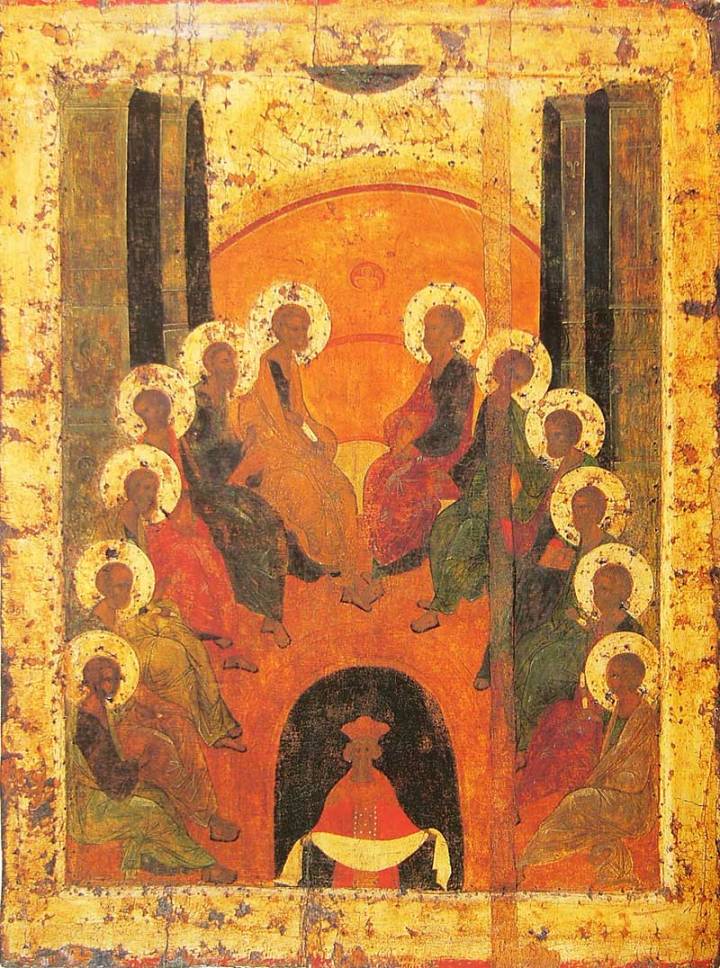
It is a beautiful icon, one that has rich symbolism to take us deeper into the mystery of Pentecost.
